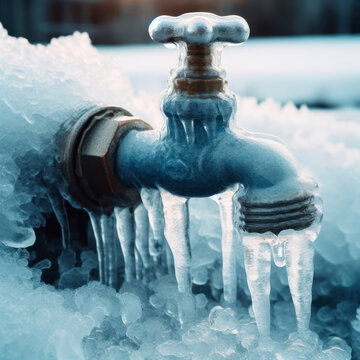Preventing Frozen Plumbing in Winter: Key Strategies
Preventing Frozen Plumbing in Winter: Key Strategies
Blog Article
Presented here on the next paragraphs you will discover a good deal of sound details pertaining to How To Avoid Freezing Pipes.

Cold weather can ruin your plumbing, specifically by freezing pipelines. Here's how to stop it from happening and what to do if it does.
Introduction
As temperature levels decline, the danger of icy pipelines rises, potentially causing pricey repair services and water damage. Understanding just how to stop frozen pipes is vital for house owners in cold environments.
Recognizing Frozen Pipes
What creates pipes to ice up?
Pipelines freeze when exposed to temperatures listed below 32 ° F (0 ° C) for expanded durations. As water inside the pipelines ices up, it increases, putting pressure on the pipe walls and possibly creating them to break.
Threats and problems
Icy pipelines can bring about water supply disturbances, home damages, and pricey repairs. Ruptured pipes can flood homes and trigger comprehensive structural damage.
Indicators of Frozen Piping
Identifying icy pipelines early can avoid them from rupturing.
Just how to recognize frozen pipelines
Seek reduced water circulation from faucets, unusual smells or sounds from pipes, and noticeable frost on revealed pipes.
Prevention Tips
Protecting vulnerable pipelines
Cover pipelines in insulation sleeves or utilize warm tape to protect them from freezing temperatures. Focus on pipelines in unheated or outside locations of the home.
Home heating methods
Maintain indoor areas appropriately heated, particularly areas with plumbing. Open cabinet doors to allow cozy air to flow around pipelines under sinks.
Protecting Exterior Pipes
Yard hoses and exterior faucets
Detach and drain garden hoses prior to winter season. Mount frost-proof spigots or cover exterior faucets with insulated caps.
What to Do If Your Pipelines Freeze
Immediate actions to take
If you presume icy pipes, maintain taps available to alleviate pressure as the ice thaws. Use a hairdryer or towels taken in warm water to thaw pipes slowly.
Long-Term Solutions
Structural adjustments
Think about rerouting pipelines far from exterior wall surfaces or unheated locations. Add extra insulation to attic rooms, basements, and crawl spaces.
Upgrading insulation
Buy premium insulation for pipelines, attic rooms, and wall surfaces. Appropriate insulation aids preserve constant temperature levels and lowers the danger of icy pipelines.
Conclusion
Avoiding icy pipelines needs positive measures and fast reactions. By understanding the causes, signs, and preventive measures, house owners can protect their pipes during winter.
6 Proven Ways to Prevent Frozen Pipes and Protect Your Home
Disconnect and Drain Garden Hoses
Before winter arrives, start by disconnecting your garden hoses and draining any remaining water. Close the shut-off valves that supply outdoor hose bibs and leave the outdoor faucet open to allow any residual water to drain. For extra protection, consider using faucet covers throughout the colder months. It’s also important to drain water from any sprinkler supply lines following the manufacturer’s directions.
Insulate Exposed Pipes
Insulating your pipes is an effective way to prevent freezing. Pipe insulation is readily available at home improvement stores and is relatively inexpensive. Pay close attention to pipes in unheated areas such as the attic, basement, crawl spaces, or garage. Apply foam insulation generously to create a buffer against the cold. You can also wrap your pipes in heat tape or thermostat-controlled heat cables for added warmth.
Seal Air Leaks
Inspect your home for any cracks or openings that could let in cold air. Seal any holes around the piping in interior or exterior walls, as well as the sill plates where your home rests on its foundation. Additionally, make sure to keep your garage door closed unless you’re entering or exiting. Leaving it open creates a significant air leak that can lead to frozen pipes.
Allow Warm Air Circulation
During cold snaps, it’s essential to allow warm air to circulate evenly throughout your home. Leave interior doors ajar to promote better airflow. Open kitchen and bathroom cabinets to help distribute heat consistently around the rooms. If you have small children or pets, be sure to remove any household chemicals or potentially harmful cleaners from open cabinets for safety.
Let Faucets Drip
A small trickle of water can make a big difference in preventing ice formation inside your pipes. When temperatures drop significantly, start a drip of water from all faucets served by exposed pipes. This continuous flow helps prevent the water from freezing. Additionally, running a few faucets slightly can relieve pressure inside the pipes, reducing the chances of a rupture if the water inside does freeze.
https://choateshvac.com/6-proven-ways-to-prevent-frozen-pipes-and-protect-your-home/

I am just very interested in How to Prevent Your Pipes From Freezing and I'm hoping you liked the new article. Those who enjoyed our blog post please do not forget to pass it around. Thanks for taking the time to read it.
Make An Appointment Report this page